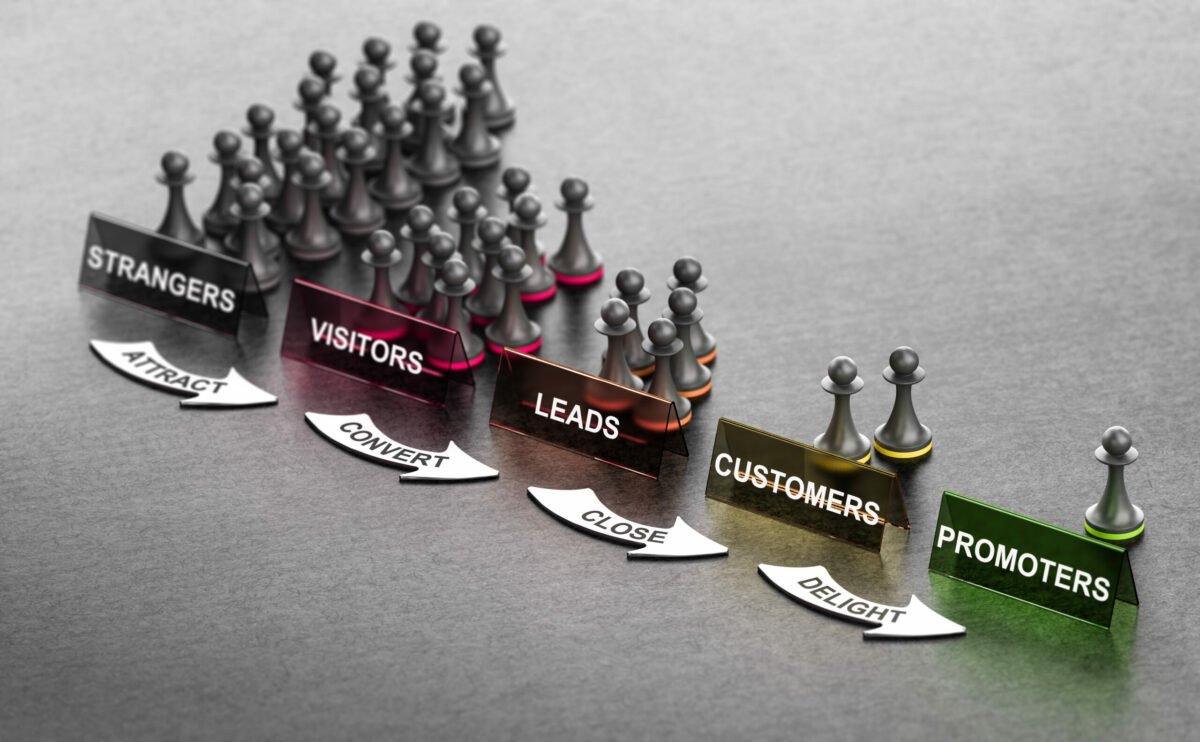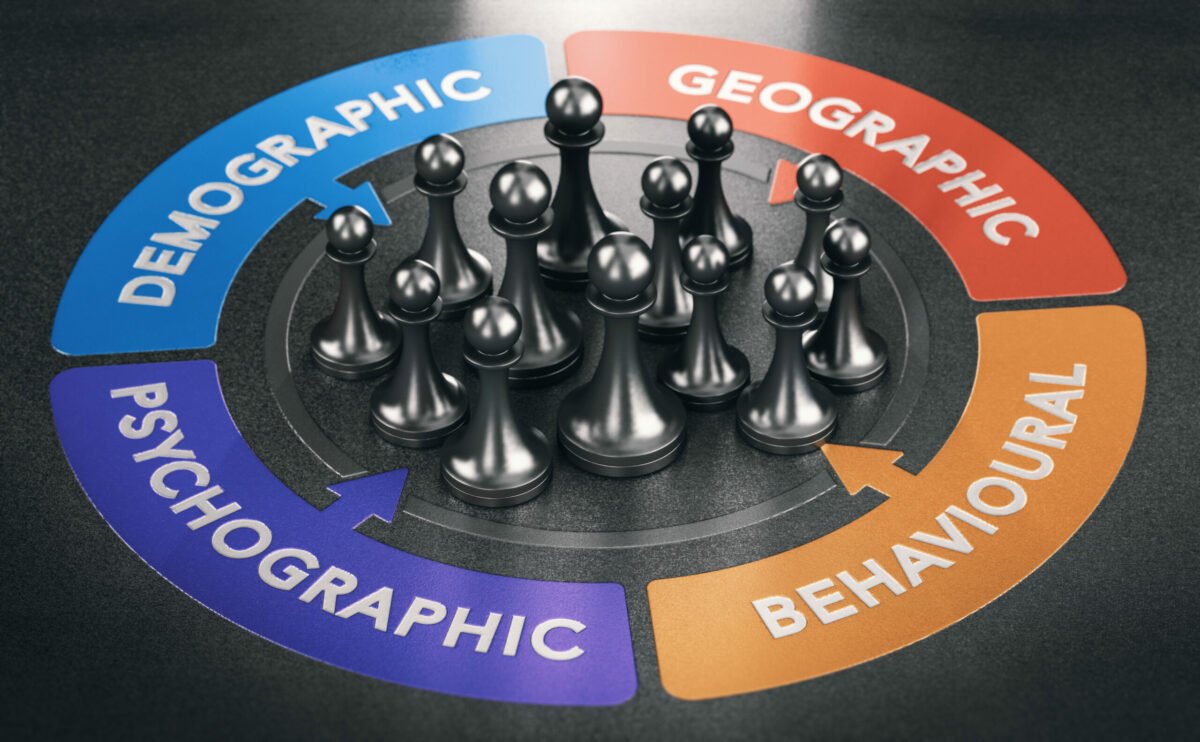As the era of modern capitalism progressed, markets shifted from focusing on products to focusing on customers. Customers are experts on what they want; therefore, learning as much as possible about each subset before deciding how to promote the product or service is essential. Thanks to segmentation, customer subgroups may be specifically targeted through marketing campaigns or business needs, promotional events, and even commercials.
Customers are likely to return to the firm to make another purchase when customized, and thus custom items are manufactured according to varied consumer preferences within the client groups.
Table of Contents
ToggleWhat Is Customer Segmentation?

The term “customer segmentation” refers to categorizing potential customers into subsets with similar purchasing habits. Every single one of your client personas buys from you because you satisfy a specific need they have, and they all use the same mediums of contact. The motivations behind a consumer purchase affect product, sales, and marketing decisions. Customers are 75% more likely to buy from organizations that conduct targeted marketing when the message is personalized.
Unlike customization and targeting, segmentation comes after the fact since you utilize on-site data to enhance campaigns off-site. You must do targeting and personalization in advance to ensure that your customers see your advertisements when they come to your store.
Also Read: 15 Experts Tell You How To Growing an Online Community
Types Of Customer Segmentation For Business Needs

1. Demographic Customer Segmentation
The term “demographic segmentation” refers to a strategy for dividing a market into smaller subsets depending on characteristics such as age, gender, socioeconomic status, etc. This segmentation helps firms understand customer behavior correctly, that in turn, helps them perform better. Demographic segmentation allows you to tailor your marketing efforts to specific subsets of your target audience.
2. Geographic Customer Segmentation
To better target certain demographics, audiences can be broken down further by geography. Customer groups can be created on a national level, regional, local, or even ZIP code level.
It’s been shown that employing geographic targeting in advertising is effective. It helps organizations better understand their clients, allowing them to adjust their products and services accordingly. Additionally, by targeting specific geographic locations, businesses may more readily reach potential consumers who reside nearby and may not be as readily available through other modes of advertising.
3. Behavioral Customer Segmentation
Customer interactions and purchase decisions may be broken down into subgroups using a ” behavioral segmentation technique.” The technique enables companies to classify clients following their familiarity with, opinion of, or interaction with a particular product, service, or brand.
The purpose is to identify client segments that help you to understand how to serve the special wants or wishes of a set of consumers, uncover possibilities to improve their customer journeys, and evaluate their potential worth to your organization.
4. Psychographic Customer Segmentation
Psychographic segmentation is a method of market segmentation that divides consumers into subgroups based on shared personality characteristics and other personal characteristics that shape their purchasing decisions. Its primary focus is on people’s mental processes and their aspirational goals in life.
The process of psychographic segmentation influences our daily lives in significant ways. Before we make friends with someone or get married to someone, we evaluate them to determine if we are compatible with them. Marketers employ psychographic segmentation to identify target audiences who are likely to be interested in their products and to get insight into how best to get those items in front of them.
5. Value-Based Customer Segmentation
In value-based segmentation, customer groups are ranked based on how profitable they are and how much it costs to keep them as clients. It also helps organizations decide which categories are the most and least profitable so that they may modify their marketing spending accordingly.
Though it may appear a bit frigid, value-based segmentation is an essential step for firms trying to improve their marketing ROI. The data you collect on your customers’ lifetime value will show you which segments of your target market require a minor investment in marketing, customer service, and repeat business.
Other Types of Customer Segmentation
- Technographic Customer Segmentation
- Firmographic Segmentation
- Needs-based segmentation
Effective customer segmentation examples for the growth of business
Demographic Customer Segmentation
1. Gender
The gender segmentation process involves separating the database into sections based on whether the subjects are male or female. Men and women have diverse tastes and preferences in everything from fashion and cosmetics to fragrance, footwear, and even eating. A corporation may get around this problem by targeting various demographics, specifically men and women.
A female consumer will not purchase a male-targeted item. Similar to how a male wouldn’t buy a product designed for a woman. This is especially true when it comes to purchasing new clothing. Industries with separate male and female product lines must pay attention to gender-based market segmentation.
Also Read: What’s Inside WordPress 4.9?
2. Age
One of the most fundamental variables is age; however, it is also crucial because customer tastes evolve over time as people age. The vast majority of advertising efforts are geared toward specific age groups. This variable may be analyzed in several age categories, including infancy, childhood, adolescence, adulthood, midlife, and old age.
Companies resort to partitioning the market to focus their resources on a specific sector of clients to enhance their competencies. Whether you use age as the sole dividing factor or combine it with other variables, you may substantially simplify your administrative and technical tasks.
3. Occupation
Occupation segmentation breaks up your target market by work function, job seniority, and job title. Many B2B businesses target their audience by occupation since they need to attract particular sorts of professionals who have the authority to make purchase choices on their team or at their firm.
Consider the seasons when focusing on various vocations to get the most out of your advertising and more easily attract clients’ attention. When consumers feel valued like this, they are more likely to provide favorable feedback on the website.
4. Marital Status
If marital status is vital for understanding your consumer base, then you may divide purchasers in a few different ways. If you want to classify your clients, you might inquire as to whether or not they are married or otherwise in a committed partnership. How you obtain, this data will depend on your business’s marketing approach.
5. Household Income
Customers’ discretionary spending power can be estimated based on their household income. Remember that money isn’t the primary consideration. Location, employment, family structure, and more will also impact a customer’s budget.
Markets can be divided into income-based subsets to better serve your business’s needs. By understanding how much discretionary money your potential consumers have, you can market to the individuals who can genuinely buy your product or service, adjust your rates according to their income, and build pricing tiers for each slice of your target market.
Geographic Customer Segmentation
1. Location
To avoid any confusion, let’s start with the most apparent. You can do a lot with location-based segments. A city, municipality, many countries, or even a whole continent are all possibilities. Your company may utilize this to find a promising new market by analyzing the area’s demographics.
This data reveals the specific locations and access points of your target audience. It also shows how you should approach distinct groups if they live in different places. For example, how you advertise to individuals in the US will undoubtedly differ from how you market to those from Singapore.
Also Read: Awesome WordPress Influencers to Follow
2. Preferred Language
It’s crucial to know the language that your consumers like to speak. This will allow for more precise communication and a smoother customer experience overall with your company. It’s neither possible nor desirable to sell to every country in English. For any marketing effort to be successful, it must be presented in the native tongue. If you’re about to enter a market where every single one of your marketing messages will need to be revised, you’d better be prepared.
3. Population
This can either focus on density or population type. A fitness chain, for instance, would opt to avoid opening a location in a sparsely populated area in favor of a more populous metropolis. There’s also an option to use a demographic overlay to locate potential customers.
4. Urban, suburban and rural
Customers’ wants and demands vary across these three settings, necessitating tailored marketing approaches. Products may be more expensive in rural locations than in urban and suburban areas because of lower purchasing power among rural residents.
Behavioral Customer Segmentation
1. Purchasing and Usage Behavior
Let’s use the app you choose for carpooling as an illustration. Monday through Friday, the service is operated by a working professional on their way to and from the office. But because they have more time on the weekend to drive, park, and walk, they only utilize the service then.
Most businesses understand the need to monitor customer purchases, product usage, and consumption to better predict future demand and cross-selling tactics. If you want to know when your marketing will impact clients most, you need to divide them into groups depending on their purchasing habits.
2. Website Activity
Consumer actions on your website encompass anything from reading your content to submitting a form. For instance, you may categorize visitors according to how they responded to the homepage. Another option is to divide your audience into subsets according to actions they’ve taken on your website, such as how often they’ve visited the homepage or interacted with a particular piece, like a CTA.
3. Customer Loyalty
Loyalty is an integral part of the behavioral segmentation puzzle. It would be a mistake to ignore customers who consistently show devotion to your brand. Creating a rewards program is typical for businesses to show appreciation for their customers’ continued patronage.
4. Buyer journey stage
You can enhance conversions at every point in the customer journey by using behavioral segmentation to better coordinate messages and customize experiences based on where the client is in the journey. You may then refine your advertising efforts to focus on those stages at which clients drop out.
However, customer journey stage segmentation is only sometimes straightforward. Customers at one stage may interact with material created at a later stage, via any number of channels, at any time, and in any sequence. As a result, it is only possible to determine a customer’s stage in the journey based on a single behavior or encounter.
5. Ecommerce Activity
Just as website activity encompasses all that happens on your site, eCommerce activity covers everything that occurs when a client shops on your site. A standard method of client categorization is based on whether or not they “abandoned” a product in a shopping cart. Customers can be categorized according to what they’ve bought or viewed but have yet to purchase.
Psychographic Customer Segmentation
1. Values
Understanding one’s values might be more challenging than determining one’s age or location. Knowing what is essential to a consumer requires you to have an intimate familiarity with their situation. Then, it would be best if you strived to put yourself in their shoes and understand their difficulties in accomplishing their objectives. Aligning with the client in this way makes it simpler to identify the features they find most valuable in a service or brand.
2. Interests
Values are traits and activities that customers admire most. The things that consumers appreciate may have little to do with your company.
If you see that many of your customers are interested in cats, consider doing a cross-promotional campaign with a nearby pet store. As a result, you can find new markets to sell to that you hadn’t considered previously. It also opens up chances to collaborate with neighboring companies to everyone’s advantage.
3. Social Status
Because people of different socioeconomic backgrounds have other product choices, this factor is crucial in psychographic segmentation. It follows that one’s social status may be inferred indirectly from one’s diet, clothing, and friends.
People’s consumption habits and product choices are typically determined by their socioeconomic standing (in general). To a certain extent, members of different socioeconomic strata tend to dress and consume the same. Elites often favor things like diamond solitaires, expensive automobiles, second residences, etc. To market a luxury automobile only to the wealthy would ignore most of the population.
Also Read: Tips To Keep In Mind While Deciding Your Business Name
3. Activities, Interests, and Opinions (AIO)
To know what will resonate with your intended audience, it’s helpful to have insight into their passions, beliefs, and viewpoints. This data is invaluable when creating buyer personas for your product or service.
Your marketing efforts will be more successful if you take the time to learn about your target audience’s interests, activities, and pastimes. Furthermore, nonprofits use AIO segmentation to zero down on their ideal clientele.
4. Personality
Personality qualities affect the way a person interacts with the environment around them. People in your target demographic may have some personality qualities to which you may design your marketing strategy.
If you want your marketing campaigns and tailored commercials to resonate with your target audience, you need to consider the consumers’ characteristics. The terms “creative,” “emotional,” “friendly,” “opinionated,” “introverted,” and “extroverted” are frequently used in psychographic segmentation to describe different sorts of people.
Also Read: Top 7 Free WordPress eCommerce Themes
Value-Based Customer Segmentation

1. Customer Satisfaction Scores
Information regarding recent service contacts may be gleaned from customer satisfaction scores, whether calculated using CSAT or NPS. Higher scores suggest that clients are delighted with your service. When the score drops below 50, there is a greater chance that customers may leave. The worth of your most committed clients may be increased by dividing them into promoters and detractors. Also, it can help you provide the necessary assistance to dissatisfied consumers.
2. Number of Purchases
In most cases, the worth of a client is calculated by looking at the frequency with which they make purchases. The more they spend with you, the more precious they are to you.
3. Average Purchase Value
Similar considerations apply to the typical cost of a purchase. The consumer is worth a lot to your company if this number is high. Customers who buy from you repeatedly are gold; thus, offering those exclusive deals and discounts makes sense.
Also Read: Learning The Differences Between Onsite And Offsite SEO For Medical Advertising
Other Types of Customer Segmentation
1. Technographic Customer Segmentation
Technological segmentation, or dividing them into subsets and establishing profiles based on their technology, is gaining popularity in understanding your customers better. There has been a rise in demand for services like software as a service (SaaS) and analytics for online marketing as more organizations have shifted their activities online.
Using technographic segmentation, you may tailor your message to each of these categories before sending it to consumers with an intriguing offer. Customers who utilize specific applications or online services can be directly targeted through technological segmentation.
Examples
- Browser Type: Google Chrome, Microsoft Edge, Safari, and more.
- Device Type: Mobile, Tablet, PC or some other.
- Original Source: Social Media, email, or some other.
Also Read: Healthcare Medical SEO
2. Firmographic Segmentation
While the earlier approaches to marketing segmentation tend to center on business-to-consumer companies, Firmographic segmentation may be of great use to B2B companies. To improve the effectiveness of sales and marketing operations, businesses often employ the technique of “firmographic segmentation,” which involves dividing a sizable consumer base into smaller subsets.
Businesses that cater to other companies might benefit significantly from this audience and campaign segmentation method. This method is somewhat analogous to the demographic segmentation used by business-to-consumer marketers.
Examples
- Domain: domain can be used to learn more about a company.
- Industry: Industry can be used to target specific offerings.
- Revenue and employees: Revenue and employee numbers are a good estimate of a company’s size.
- Technographics: The technologies a company is using tells a lot about the way it conducts its business.
3. Needs-based segmentation
A customer’s needs are used as a basis for segmentation in a needs-based approach, which considers the customer’s history with the brand. Although it may make use of behavioral components, its reach is considerably broader, including the customer’s first point of contact with your company, the length of time since their previous purchase, and the total number of purchases they’ve made.
Examples
- Product Attributes: Some groups of customers need specific features.
- Service Needs: Finding Service needs will ensure your customers are properly supported.
- Delivery Method: categorize individuals who have specific shipping or delivery needs.
Also Read: Best Medical WordPress Theme for Hospitals And Health Care
How to choose the right customer segmentation model

Customer data categories that most affect conversion rates should be identified before developing a strategy for customer segmentation. You may use this to bridge the information gap between what you have and what you need for a more effective segmentation approach. Lucky for us, there are only two actions required to do this.
1. Think carefully about the kinds of consumer information that can help you expand
When running a company, this next phase will look different for everyone. Find out what you hope to accomplish with your marketing effort, and then use that information to guide your selection of a consumer segmentation strategy. To determine what information is necessary to reach a specific subset of your target audience, you must first define the exact marketing goal you have for a particular campaign.
2. Figure out the right tools to collect the data
While you may already have some consumer data at your disposal, you may only sometimes be able to use it for segmentation purposes. With Google Analytics, insight into your website’s audience and user behavior is at your fingertips. One viable alternative is to use programs that can automatically transform client information into sound business decisions.
Also Read: Best WordPress Themes for Business Services
3. Audience engagement through personalization
It is impossible to emphasize the importance of consumer segmentation to your entire marketing strategy. The correct customer segmentation approach also allows for more nuanced customization of messages sent to different groups of customers. Because of this, you may anticipate more campaign participation, a more significant number of leads, and a greater return on investment. Although manual client segmentation is possible (to some extent), many companies are instead investing in specialist software that helps you collect, manage, and implement consumer data.
Conclusion On Customer Segmentation For Business Needs
While customer segmentation is an ongoing process, it may be simplified with the aid of a reliable email marketing provider. Test the waters with a few parts and observe how they develop over time. Depending on how well each subpart is doing, you may progressively add or eliminate it.
Every action taken by your clients is evaluated based on whether or not the outcome is what they desire. Using segmentation, you may pinpoint your target audience’s specific wants and requirements and tailor your marketing to them with minimal wasted effort. Get started on your plan for client segmentation with the help of the resources provided. You already own all of the required resources to wildly wow your clients.
Interesting Reads:
Top WordPress Migration Service To Move Your Website








